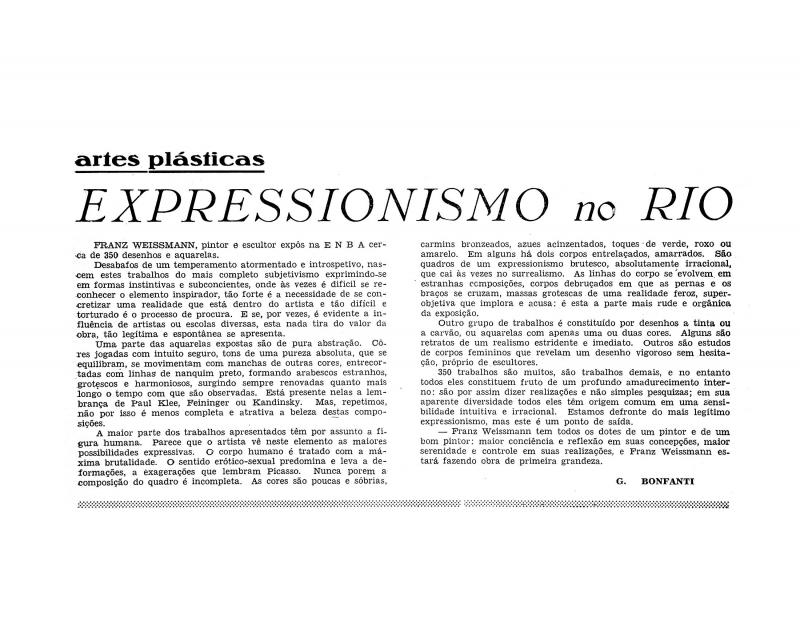Joaquim was a monthly magazine published in the city of Curitiba (Paraná, between 1946 and 1948) by Dalton Trevisan, Antonio P. Walger and Erasmo Pilotto. Joaquim reported on debates centered on the challenging ideas belonging to the new generation of modern artists: among them, Mário de Andrade, Carlos Drummond de Andrade, Candido Portinari, Vinicius de Moraes, Sérgio Milliet, and Heitor dos Prazeres. The magazine’s editors and collaborators sought to question the concepts of ethics and aesthetics that were in style at that time in Brazil.
[See these other texts published in Joaquim in the ICAA digital archive: by G. Bonfanti “Expressionismo no Rio” (doc. no. 780855); by Oscar Niemeyer “Formação e evolução da arquitetura no Brasil” (doc. no. 780917); by Carlos Drummond de Andrade “Invencionismo” (doc. no. 777307); by Edgard Bayley “Manifiesto invencionista” (doc. no. 777253); and by Erasmo Pilotto “Poty e a prata da casa” (doc. no. 781252)].
Mário Pedrosa (1900–81) was an intellectual and politician, and undoubtedly the key theoretician and critic on Brazilian art of the 20th century. He began as an international politics correspondent for the Diário da Noite, and beginning in the 1920s he was affiliated with the PCB (Communist Party of Brazil). He was imprisoned in 1932 because of his political militancy (Trotskyism). During the Estado Novo of Getúlio Vargas, he lived in exile in France and New York, and only returned to Brazil after the Second World War, when he worked for the Correio da Manhã. His stance against Stalinism led him to found the Vanguarda Socialista, a weekly publication. He presented a thesis on aesthetics called “Da natureza afetiva da forma na obra de arte” (1949) at the School of Architecture (Rio) that made use of his philosophical background, and his knowledge of Gestalt psychology; during that time he was also one of the founders of the AICA (1948) and also organized the International Conference of Art Critics (Brasilia, 1959). He wrote an arts column for the Tribuna da Imprensa (1950–54) and was an organizing member of the II and III São Paulo Biennials (1953 and 1955), later becoming director of the MAM-SP (1961–63). He served as secretary for the National Council of Culture during the brief government of Jânio Quadros. During the military dictatorship he took refuge in Chile, where he became director of the Museo de la Solidaridad in Santiago; after the Pinochet coup (1973), he left for Havana, where he served as secretary for the Museo de la Resistencia Salvador Allende. He only returned to Brazil in 1977 (at the beginning of the amnesty) and was the first to sign the manifesto creating the PT (Party of Workers, 1980). His vast library (which included eight thousand volumes) is partially available at the national library in Rio de Janeiro.





